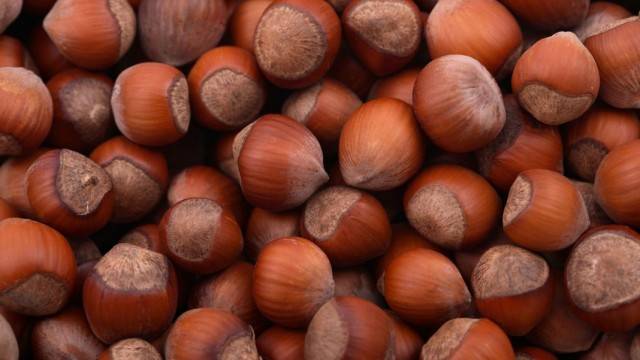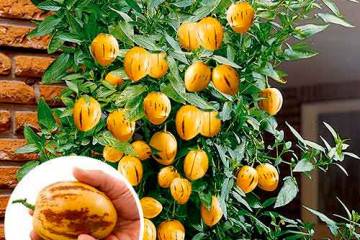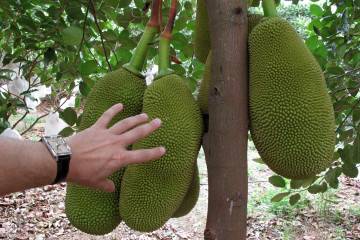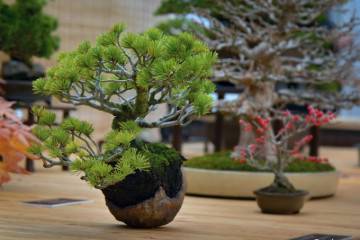Hazel (walnut) is a tree or shrub
Content:
Some gardeners, as soon as it comes to hazel, is firmly convinced that this plant can take root and bear fruit successfully only in southern regions with a mild climate. This is absolutely not the case. Practice shows that the cultivation of this crop does not present any particular problems. But it is difficult to argue about the benefits of hazel fruits: they are rich in fats, proteins and carbohydrates. In addition, they contain mineral salts and vitamins.
Hazel: tree or shrub
Hazel, or hazel, belongs to the Birch family, whose representatives are deciduous trees or shrubs that can grow up to 5-7 m. It is not surprising that many are wondering whether a hazel is a tree or a shrub. In fact, it can be a shrub or a tree - it all depends on the specific variety.
The shape of the crown of hazel is round, with a slightly elongated tip, large leaves are round or slightly oval, serrated along the edge. The flowers are monoecious and unisexual: on the same shrub, they are present both male in the form of catkins and female, which are pollinated by male pollen.
Fruits - small rounded nuts - ripen at the beginning of autumn and are in a leaf wrapper - a plyus.
Red-leaved and green-leaved hazel
Hazel is appreciated by gardeners not only for its fruits, but also because of its decorative appearance. Quite often, landscape designers use this plant with dense and large leaves in their compositions. In addition, many varieties are painted in colorful golden and red shades in the fall.
Also in demand for ornamental plantings is red-leaved hazel - a shrub that has a crimson leaf color throughout the season. It is often used in compositions with conifers and herbaceous plants. It is believed that hazelnut varieties with green leaves are more winter hardy than red-leaved ones. Although the selection does not stand still, and to date, many varieties have been obtained that successfully grow in temperate latitudes.
Hazelnut varieties
Numerous varieties of hazel differ not only in the color of the foliage and fruits, but also in the shape of the crown. Hazel can be either a tree or a shrub.
Common hazel or hazelnut
Common hazel is a shrub reaching a height of 5-6 m. Its crown is spreading, wide. A distinctive feature of this walnut shrub is that it begins to bloom even before the leaves open. That is why this species is especially loved by bees: its golden earrings are an excellent delicacy for insects hungry and weakened after winter.
In the spring, as soon as the foliage begins to bloom, from above it acquires a greenish-matte shade, and from below it becomes lighter. By autumn, all the leaves are evenly painted in a bright yellow color.
A feature of the development of the shrub is the uneven growth: in the first few years, the hazel grows very slowly, but after 5-6 years many young shoots begin to appear.
Under natural conditions, hazelnuts grow in the Crimea, the Caucasus, Russia and Western Europe.

Hazelnuts are a very high-calorie product containing, in addition to protein, various vitamins and minerals
Bear nut or tree hazel
The bear nut stands out from other varieties of its family. It is he who belongs to the variety of hazel, which is presented in the form of a tree. This plant can grow to a height of 15-20 m with a crown diameter of 7-8 m. It is characterized by the presence of a slender trunk and a spreading crown in the form of a wide pyramid.
The dense, rich green foliage blooms much earlier than other trees. Treelike hazel has a whitish-gray bark in the form of plates. This plant noticeably grows annually, as it is able to tolerate shading well, tolerates frost well and is resistant to droughts.
Under natural conditions, the tree prefers the climate of the Balkans, the Caucasus and Asia Minor. In many countries, it is under protection, therefore it is grown in reserves, and also, due to its decorative effect, is used to decorate alleys and parks.
Hazel and hazelnut - what's the difference
The main difference between hazel and hazelnut is the fact that hazel is a hazel shrub that grows naturally in the wild. Hazelnut is a shrub of hybrid varieties of hazel, which gives high yields, characterized by high quality nuts.
Hazelnut is considered a more thermophilic shrub plant, its fruits are larger in weight, but more elongated in shape and are characterized by higher yields.
Hazelnuts are characterized by a round shape. It is believed that they are healthier than hazelnuts, as they grow naturally, although vitamins and nutrients are contained in hazel and hazelnuts in approximately the same amounts.
Hazelnuts have a more delicate aroma and less pungent taste than their wild cousin - hazel. Also, hazelnuts are high in calories.
Growing hazel in the garden
Hazel is a shrub that begins to bear fruit 7-8 years after planting. Therefore, if you really want to get a harvest much earlier, you can try to transplant plants that have grown naturally in the forest.
To do this, the damaged roots are removed from the excavated plants, they are dipped in a clay (or with the addition of a mullein) chatterbox and planted at a distance of about 3 m from each other in the prepared soil. In this case, the root collar should not be buried in the ground, it is better if it is located at a distance of 3-4 cm above the soil surface. After planting, the bushes are thoroughly watered and mulched using fine manure.
If a seedling is planted, then it should be without leaves, with 3-4 powerful stems and live branched roots (immediately before planting, they are cut to 0.25-0.3 m).
The main stages of planting
The planting process is not difficult at all. The main thing is to follow these rules:
- A place. Although in the wild, the walnut is a shrub growing in the underbrush and accustomed to the shade, in a garden it is still better to plant it in lighter areas.
- The soil. The plant loves fertile and loose soils. Therefore, if the quality of the soil on the site leaves much to be desired, it is necessary to prepare a place for planting in advance. To do this, fertile soil, ash, superphosphate, manure, which has managed to perepilat, and a little earth from under a bush from the forest are brought into the dug holes.All this is thoroughly mixed and left to grind for about a month.
- Watering. Hazel is a moisture-loving plant, therefore it is necessary to water it often and abundantly in the absence of rain. Otherwise, the lack of moisture will negatively affect the quality and quantity of the crop. Watering is recommended in parts, allowing moisture to be absorbed. And the next day, it is advisable to loosen the soil, preventing the appearance of a crust on the surface.
Hazel is a deciduous tree or shrub - depending on the species, which is adapted to habitat both in natural conditions in nature and in cultivated conditions. It is not at all necessary to surround the plant with unnecessary care - it is rather unpretentious, but with good care it pleases with higher yields.
Hazel - a wild plant that lives in natural conditions, or hazelnuts - hybrid varieties of hazel, distinguished by a higher class of fruits in terms of calorie content, are equally useful due to the useful substances they contain.



















